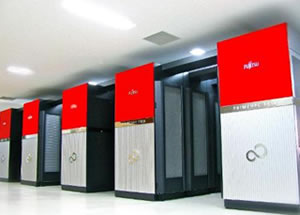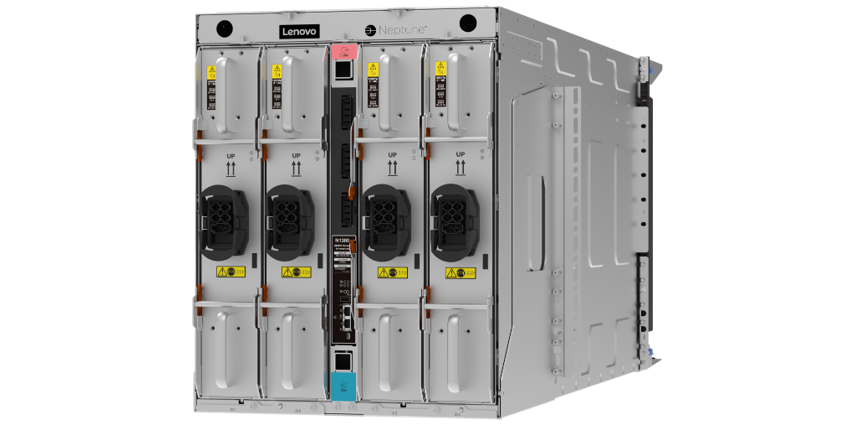By Timothy Prickett Morgan • Get more from this author
 Japanese IT conglomerate Fujitsu has been pushing hard to peddle its Sparc and x86 supercomputer clusters to take on IBM, Cray, Silicon Graphics, and others, and not surprisingly Fujitsu it has scored some big deals in the home country. The company just took down a big hybrid Sparc-x86 cluster deal at Kyushu University, which is the dominant educational institution in the southern part of Japan.
Japanese IT conglomerate Fujitsu has been pushing hard to peddle its Sparc and x86 supercomputer clusters to take on IBM, Cray, Silicon Graphics, and others, and not surprisingly Fujitsu it has scored some big deals in the home country. The company just took down a big hybrid Sparc-x86 cluster deal at Kyushu University, which is the dominant educational institution in the southern part of Japan.
Like the 1.13 petaflops “Oakleaf-FX” machine that was just fired up this week at the University of Tokyo, the new machine going into Kyushu University will be compatible with the 10.5 petaflops massively parallel Sparc64 machine known as K that was built by the Japanese government and that has been the most powerful machine in the world for the past year. And like the University of Tokyo, Kyushu University was also a user of IBM’s parallel clusters, in this case a Power6-based system based on Power6 processors that is resold by Hitachi as the SR16000 rated at 25.3 teraflops.
Kyushu University also had a 64-engine VPP5000/64 vector supercomputer made by Fujitsu rated at a comparatively tiny 563 gigaflops and an old PrimeQuest Itanium cluster rated at 10.9 teraflops. The largest machine in its data center is a cluster of Primergy RX200 S6 rack servers with 4,704 Xeon cores that is rated at 50.2 teraflops. Add it all up and this is no big deal in today’s petaflops era.
But Japan, like the United States, China, and Europe, is on an upgrade wave in the HPC data center, and the hybrid Kyushu University machine, which has not yet been nicknamed, will weigh in at a combined 691.7 teraflops across the Sparc and Xeon nodes used for computation, and that is perfectly respectable.
On the Sparc side of the system, Kyushu University is getting eight racks of the PrimeHPC FX10 system, which is a modified version of the K super that uses a 16-core Sparc64-IXfx processor instead of the older eight-core Sparc64-VIIIfx used in the K machine. The Sparc side of the machine will have 768 server nodes with a total of 24TB of main memory and will of course use the “Tofu” 6D mesh/torus interconnect to link those nodes together.
The PrimeHPC FX10 setup will be back-ended with 44 of Fujitsu’s Eternus storage arrays with a total of 576TB of capacity and running the Fujitsu Exabyte File System (FEFS), a variant of the Lustre cluster file system that was designed to span 100,000 nodes. The machine is front end-end by 22 Primergy x86 servers that are used as log-in and management nodes. This part of the hybrid machine will have a peak theoretical performance of 181.8 teraflops.
The bulk of the raw math in the Kyushu University system comes from a cluster of Fujitsu density-optimized CX1000 machines, which were first announced two years ago with the Xeon 5600s. The CX1000 machines were updated in March with CX400 enclosures sporting Intel’s new Xeon E5-2600 processors, and the system has 1,476 two-socket nodes that together have 184.5TB of main memory and deliver 510.1 teraflops of peak performance on double-precision math. This machine is also using FEFS on a cluster of 74 Eternus storage units with a total of 4PB of capacity and is front-ended with 44 Primergy rack servers used to manage access to the cluster.
The whole shebang will presumably run Linux – Kyushu University didn’t say – but there is obviously the option of running Solaris on the Sparc side and Windows HPC Server 2008 on the x86 side.
Later this year, when the machine has been up and running for a bit, Kyushu University will be slapping some GPU coprocessors into the box to boost its performance, very likely through the petaflops barrier and possibly as high as many petaflops. If the university waits for the “Kepler” Tesla GPUs from Nvidia – and those CX400 enclosures have room – then Kyushu University could be sitting near the top of the Top 500 supercomputer rankings by the fall, instead of near the bottom as it is with its current Primergy cluster. ®
This article originally appeared in The Register. It appears here in its entirety as part of a cross-publishing agreement.



